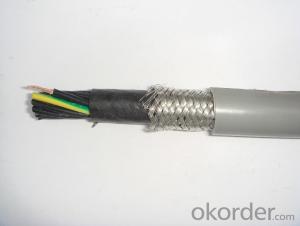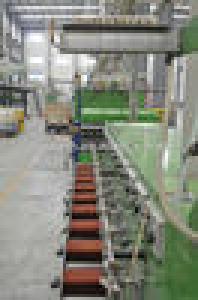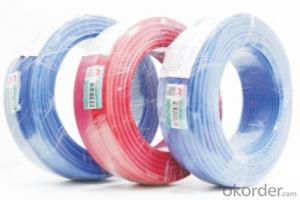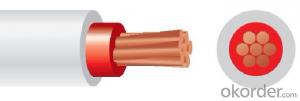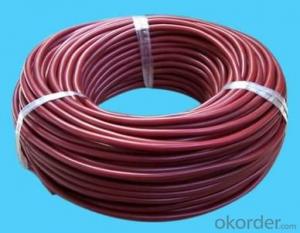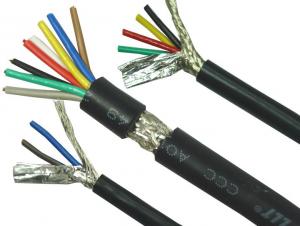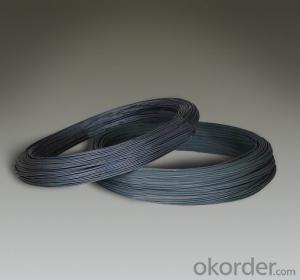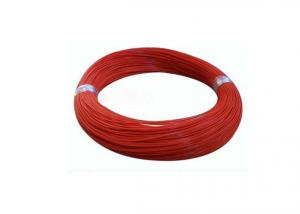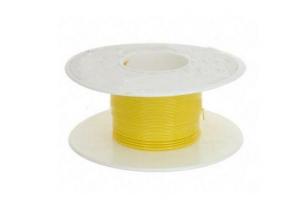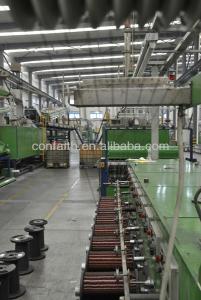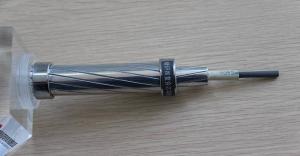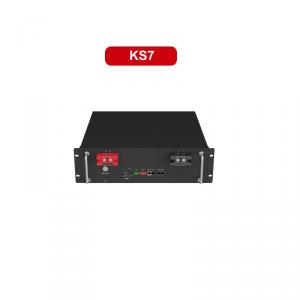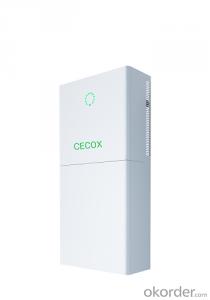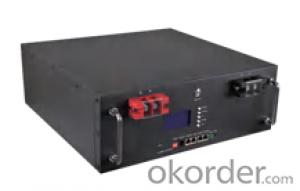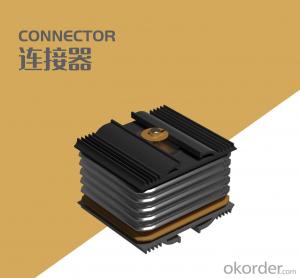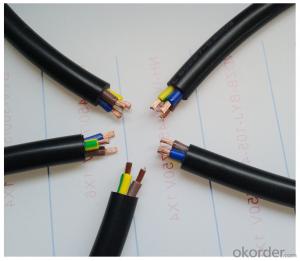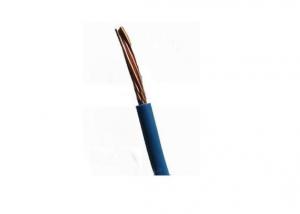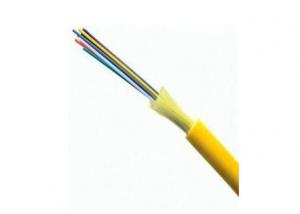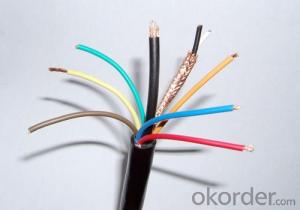PVC Insulated and Sheathed Flat Cable 300 /500V & 450/750V
- Loading Port:
- Shanghai
- Payment Terms:
- TT OR LC
- Min Order Qty:
- 600 m
- Supply Capability:
- 100000 m/month
OKorder Service Pledge
OKorder Financial Service
You Might Also Like
1. Product Description:
1. Wire - Copper core PVC insulated PVC sheathed flat cable is made in compliance with the national standard and have passed the CCC--China Compulsory Certification, which contains the recondition of national security certificate--CCEE. Imports of Safety and Quality Licensing System--CCIB. China Certification Electromagnetic Compatibility--EMC
2. Range of application: A.C rated voltage 300/500V
3. The permissible continuous operating temperature of wire shall not exceed 70 centigrade and the installation temperature of wire shall not be lower than -15 degree
2. Product Characteristic:
1. Main colors: sheath--white/black/grey; 2cores--red and black; 3cores--red, yellow and blue.
2. Minimum bending radius: Up to 10mm², 3 x overall diameter;10mm² to 25mm², 4 x overall diameter
3. The cable can be of flame retardance, fire resistance and other property
4. Remark: We are able to produce 2C, 2C+E, 3C & 3C+E by AS/NZS
3. Product Specification:
Type | H05VVH2-U, H07VVH2-R, H05VVH2-F, H05VVH4-U, H07VVH4-R, H05VVH4-F, BS6004 624*Y | |
Voltage Rate | 300/500V, 450/750V | |
Cores | 2C, 3C, 2C+E, 3C+E | |
Range of Nominal cross section: | 0.75 mm2 ~ 16 mm2 | |
Application | These cables are used for general purpose, as building wire for power, lighting and control wire to electrical appliances, suitable for use in conduit and for fixed, protected installation. | |
Standard | IEC60227, BS6004, GB/T5023, JB/T8734 | |
Constructions | Conductor: Class 1/2 annealed bare copper solid or strands Insulation: PVC Sheath: PVC Core color: White, Grey or others on request | |
Max. Operating Temperature | 70℃, can be90℃ and 110℃ as per requirement | |
4. Reference Picture:

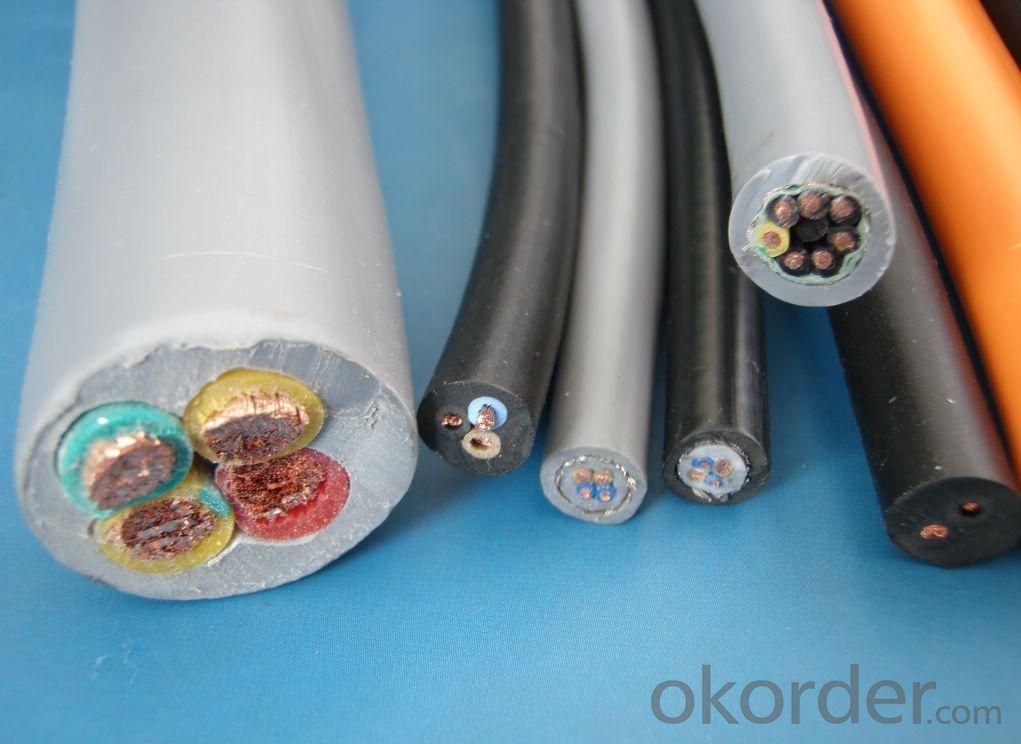
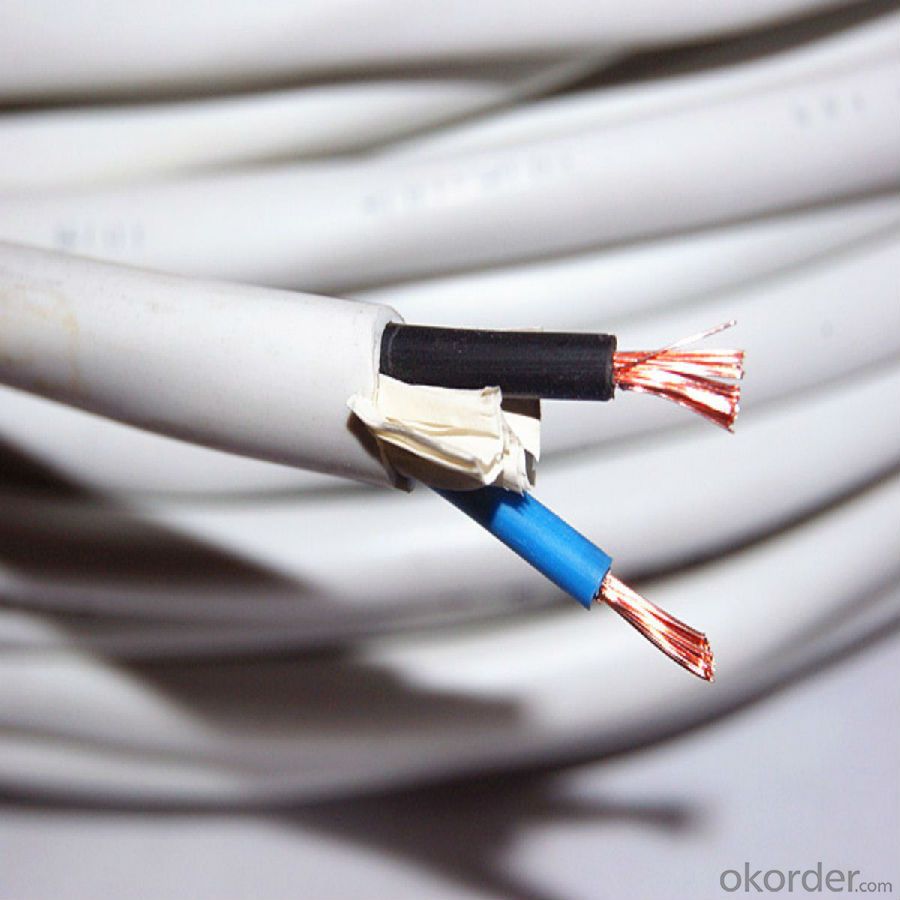
- Q:I know it sounds weird but I like to do little projects here and there with any loose electrical stuff I have. you know. takes apart electronics I don't use and try to make a fun little project out of making something new and useful. And it happens that I have a large supply of unneeded ethernet and phone cables and I am ussually very good with this kind of stuff. but this has me stumped. O.o Can these wires be used at electrical wiring in a simple or complex circuit? I mean it makes sense. but I don't want to waste time and not have it work as I've never used them like that before.
- Yes and it is a very good idea for SMALL electrical prodjects. What you need to do is clip the 2 ends of the ethernet cord and throw them away. Then you need to strip the rubber case that is on the outside of the cables. Its about 1 MM thick so be careful. Use like a scissors and make a little shallow cuts around the cord (O and by the way we are stripping the case of the real cords right now). Do this every foot or two and pull the rubber case off. There should be many little cords in there called CAT 5. Take two of those cords out and strip the ends of them and you have two perfectly good cords to work with (you can use the other cords as well of course). Thats pretty much all you have to do. Hope this helps!
- Q:How does electrical field spread through the wire when there is potential difference on its edges?
- as current flows
- Q:Water pipe in the next line in which the norms have to solve
- Under normal circumstances, the weakness of the bridge with more, like office buildings are generally in the corridor, if the strong power from the corridor to take the cable or wiring more, are not easy to embed, you can also walk the bridge, as to why the use of bridge , Because the wiring into the inside, and finally wrapped with iron, the equivalent of a channel to protect the isolation, no special meaning
- Q:I want to put electrical tape on the spark plug wires in my car, to make them look better. My plan is to just put colored tape around each wire to beautify my engine bay. Anyone see any problems with this? Please and thanks!
- will look stupid
- Q:There is a thing that can measure the location of the wire inside the wall, what is this instrument called? What is its working principle? Thank you in detail
- Are common, can not find the words you go to sell the computer market to buy a can
- Q:I have an 5 month old kitten she has chewed plug ends off of things that are plugged into electrical sockets
- If the other suggestions fail then go to the pet store and get some bitter apple or bitter orange. Apply it to anything you don't want the kitten to chew on.
- Q:I heard someone at an energy conference refer to a study that showed that going to a one size thicker wire in a home -- I am assuming on the American wire gauge, AWG, system -- will lead to a significant drop in home electrical energy usage. I write significant because the percentage was so big I can't remember it exactly.
- As already noted, these are available. They are sometimes known as Meter Socket Blank Covers. Most are plastic these days. Old ones were glass. The meter socket is a standardized dimension. No need to measure. Very unlikely to be found at big box stores. The power company may not be a bad idea (may even get it for free). The other likely place is going to be at an electrical supply store (Some names that may be in your area are: Platt, All-Phase, Consolidated Electrical Distributors/CED, Stusser, Graybar). Of course, the suggestion to remove it and repair the hole was not bad either. I have also seen several other answers from Mr. 50 yrs retired electrician. I'm not sure where he did his 50 yrs. Not likely anywhere that the NEC was enforced. If I'm wrong, I should move and start finding his old customers. I could spend the rest of my career fixing work like that.
- Q:Is all the electrical add up about 6000 watts or so
- 75 square meters of cable diameter should be about 5mm. Cable (electriccable; powercable): usually consists of several or several groups of wires. Safety requirements: When the cables cross each other, the high voltage cable should be under the low voltage cable. If one of the cables is in the range of 1 m before and after the cross-pipe protection or partitioning, the minimum allowable distance is 0.25 m. When the cable is close to or intersecting the heat pipe, the minimum distance between parallel and cross is 0.5m and 0.25m, respectively. When the cable is crossed with the railway or road, the pipe should be protected from the rail or the road 2m. The distance between the cable and the foundation of the building shall be such that the cable is buried outside the building; the cable shall be pipe-protected and the protective pipe shall be outside the building. Directly buried in the ground between the cable and the grounding of the grounding device should be separated between 0.25 ~ 0.5m; buried directly in the underground cable buried depth, generally should not be less than 0.7m, and should be buried in the frozen soil layer.
- Q:Today to buy the wire, the need to load is 3000W, do not know how to buy a thick wire, to sell the place where the wire, only to know what a square, two squares, do not know what the square refers to what? Is it inside the cross-sectional area of the wire? What is the unit? How much power do you need to calculate how much wire? Question added: Does the square mean cross-sectional area? If it is 2.5 square millimeters, then the wire diameter is how long? How to calculate this? How to know this wire is 2.5 square millimeters, you can use the ruler out of it? More
- It shows that the design is unreasonable The correct approach is that there is a special cable wells in the best, however, the general construction unit is too expensive to save this may be bitter construction units continue to repair, it is difficult to cure here to introduce a few ways, According to the situation selected: . casing filled with dry cement, and with a wooden hammer tamping, but a certain idea of security, high pressure line once rammed the skin is too dangerous, should be done before power, you now estimated to have power, . outside the set of electric wells, the depth of the bottom of the casing in the 1 meter or so, and the wells do waterproof, wellhead should be hardened around, to avoid rain immersion, you seem to have done, but do not good enough, at the same time Into the built-in automatic suction pump, rain more than a certain depth of automatic drainage, is the price slightly higher; . in the cable casing surrounded by water swelling type of water, such as BW Zhishui, etc., but the effect in general.
- Q:I am trying to install new electrical cooking controls into my kiln. the part is robert shaw inf-240-31b, or 5501-473. I drew a diagram of how it was attached to the wiring inside the kiln before i took it apart, but now that i have the new controls, and i am installing them, i realized that i left something out of my diagram. at the top of the control, there are three prongs sticking out. the first is labeled P, the second, L1, and the third, L2. however, when I drew my diagram, i only drew two prongs sticking out at the top, and did not label them in my sketch. there are two wires that need to be connected to the prongs. which two do I connect to the wires? and what to P, L1, and L2 represent?
- I am assuming that kiln uses 240 volts because it is high power. If instead it is gas fired then you are talking 120 volts just to safely open and close that gas valve. For 240 volts, L1 and L2 are typically the two live wires. For 120 volts L1 is usually the live wire and L2 usually the neutral. The third one must be a ground to keep you from getting a shock if live wires touch any metal on the outside of the control. Usually it does not make any difference for 240 volts where you connect L1 and L2. For 120 volts you need to get the live wire to the right place. For the 240 volts there is probably a switch symbol on the diagram that opens both wires for shutoff. For the 120 volts the switch is only in one of the wires and that is the L1 live one. If you are in doubt try phoning tech support at Robert-Shaw.
1. Manufacturer Overview |
|
|---|---|
| Location | |
| Year Established | |
| Annual Output Value | |
| Main Markets | |
| Company Certifications | |
2. Manufacturer Certificates |
|
|---|---|
| a) Certification Name | |
| Range | |
| Reference | |
| Validity Period | |
3. Manufacturer Capability |
|
|---|---|
| a)Trade Capacity | |
| Nearest Port | |
| Export Percentage | |
| No.of Employees in Trade Department | |
| Language Spoken: | |
| b)Factory Information | |
| Factory Size: | |
| No. of Production Lines | |
| Contract Manufacturing | |
| Product Price Range | |
Send your message to us
PVC Insulated and Sheathed Flat Cable 300 /500V & 450/750V
- Loading Port:
- Shanghai
- Payment Terms:
- TT OR LC
- Min Order Qty:
- 600 m
- Supply Capability:
- 100000 m/month
OKorder Service Pledge
OKorder Financial Service
Similar products
New products
Hot products
Hot Searches
